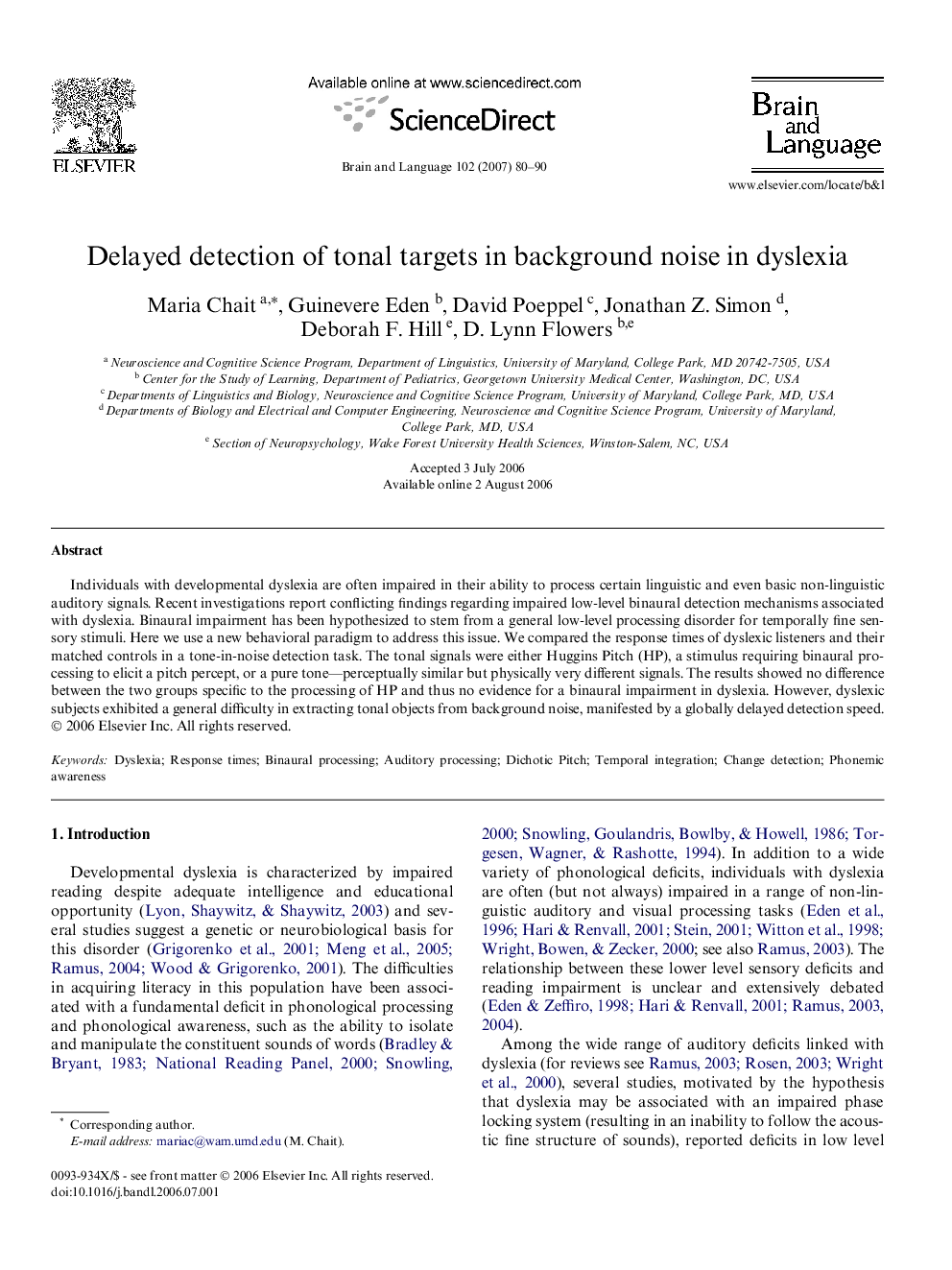| Article ID | Journal | Published Year | Pages | File Type |
|---|---|---|---|---|
| 925815 | Brain and Language | 2007 | 11 Pages |
Individuals with developmental dyslexia are often impaired in their ability to process certain linguistic and even basic non-linguistic auditory signals. Recent investigations report conflicting findings regarding impaired low-level binaural detection mechanisms associated with dyslexia. Binaural impairment has been hypothesized to stem from a general low-level processing disorder for temporally fine sensory stimuli. Here we use a new behavioral paradigm to address this issue. We compared the response times of dyslexic listeners and their matched controls in a tone-in-noise detection task. The tonal signals were either Huggins Pitch (HP), a stimulus requiring binaural processing to elicit a pitch percept, or a pure tone—perceptually similar but physically very different signals. The results showed no difference between the two groups specific to the processing of HP and thus no evidence for a binaural impairment in dyslexia. However, dyslexic subjects exhibited a general difficulty in extracting tonal objects from background noise, manifested by a globally delayed detection speed.
